Robotic Crawler Inspection Camera
35000 INR/Unit
Product Details:
- Product Type Crawler Inspection Camera
- Usage Industrial
- Color Silver
- Accuracy 100 %
- Control Mode Manual
- Click to View more
X
Robotic Crawler Inspection Camera Price And Quantity
- 1 Unit
- 35000 INR/Unit
Robotic Crawler Inspection Camera Product Specifications
- Manual
- Crawler Inspection Camera
- Silver
- Industrial
- 100 %
Robotic Crawler Inspection Camera Trade Information
- 100 Unit Per Week
- 7-10 Days
Product Description
A robotic crawler inspection camera is a specialized device used for inspecting and surveying hard-to-reach areas such as pipelines, sewers, nuclear reactors, and other industrial structures. It typically consists of the following components:
1. Crawler: The main body of the device, which houses the camera and other sensors, as well as the propulsion system. The crawler is designed to move along surfaces such as pipes or walls, often utilizing tracks or wheels for movement.
2. Camera: The primary component used for visual inspection. It may include features such as pan, tilt, and zoom functionality to provide a detailed view of the area being inspected. In some cases, it may also have built-in lighting to illuminate dark areas.
3. Sensors: Additional sensors may be included to provide data on factors such as temperature, humidity, gas levels, or structural integrity. These sensors help assess the condition of the environment being inspected and detect any potential hazards.
4. Control System: The control system allows operators to remotely operate the crawler and camera, as well as view the live feed from the camera and analyze data from any sensors. This can often be done using a handheld controller or a computer interface.
5. Power Source: Robotic crawlers typically require a power source to operate. This may be in the form of batteries for smaller units or a tethered power supply for larger, more powerful systems.
6. Communication System: In order to transmit data and video feed back to the operator, the crawler may be equipped with a wireless communication system, such as Wi-Fi or radio transmitters.
How does Robotic Crawler Inspection Camera work?
A robotic crawler inspection camera typically operates using the following basic principles:
1. Propulsion: The robotic crawler is equipped with a propulsion system, which allows it to move along surfaces such as pipes, walls, or floors. This propulsion system may utilize tracks, wheels, or other mechanisms to navigate through the inspection area.
2. Camera and Sensors: The robotic crawler is equipped with a camera and various sensors to capture visual and environmental data from the inspection area. The camera provides live video feed to the operator, allowing them to see the area being inspected in real-time. Meanwhile, sensors may detect factors such as temperature, humidity, gas levels, or structural integrity, providing additional information about the environment.
3. Control System: Operators control the robotic crawler remotely using a handheld controller or a computer interface. Through this control system, they can maneuver the crawler, adjust the camera angle and zoom, and access data from any onboard sensors.
4. Power Source: The robotic crawler is powered by a battery or a tethered power supply, depending on its design and intended use. Batteries provide mobility and flexibility, while tethered power supplies ensure continuous operation for longer periods.
5. Communication System: To transmit data and video feed back to the operator, the robotic crawler may be equipped with a wireless communication system, such as Wi-Fi or radio transmitters. This allows operators to monitor the inspection in real-time and make informed decisions based on the collected data.
6. Navigation and Mapping: Some robotic crawlers are equipped with advanced navigation and mapping capabilities. These features enable the crawler to navigate complex environments autonomously, map out the inspection area, and plan efficient routes for inspection.
Applications of Robotic Crawler Inspection Camera:
1. Pipeline Inspection: Robotic crawlers are frequently used to inspect pipelines in industries such as oil and gas, water management, and chemical processing. They can navigate through pipes of different sizes and materials to detect defects, corrosion, leaks, and blockages.
2. Sewer and Drain Inspection: Municipalities and wastewater management facilities utilize robotic crawlers to inspect sewer lines and drainage systems for damage, blockages, or other issues. This helps prevent sewer backups, flooding, and environmental contamination.
3. Power Plant and Industrial Equipment Inspection: Robotic crawlers are employed in power plants, manufacturing facilities, and industrial sites to inspect boilers, turbines, heat exchangers, and other equipment. They can assess the condition of critical components, identify defects, and facilitate predictive maintenance to prevent costly downtime.
4. Nuclear Reactor Inspection: In nuclear facilities, robotic crawlers are used to inspect reactor vessels, containment structures, and other components for cracks, corrosion, or radioactive contamination. This allows operators to ensure the safety and integrity of nuclear reactors without exposing personnel to radiation hazards.
5. Building and Infrastructure Inspection: Robotic crawlers are utilized in construction, civil engineering, and infrastructure maintenance to inspect bridges, tunnels, dams, and other structures. They can assess the structural integrity, identify deterioration, and monitor for signs of damage or wear over time.
6. Aerospace and Aviation Inspection: In the aerospace industry, robotic crawlers are employed to inspect aircraft fuselages, wings, and other components for defects, cracks, or corrosion. This ensures the safety and airworthiness of aircraft and helps prevent catastrophic failures.
7. Underwater Inspection: Some robotic crawlers are designed to operate underwater, making them suitable for inspecting submerged structures such as offshore platforms, ship hulls, and underwater pipelines. They can perform visual inspections, collect data, and facilitate maintenance in challenging marine environments.
8. Emergency Response and Search-and-Rescue: Robotic crawlers can be deployed in emergency situations, such as collapsed buildings or hazardous environments, to search for survivors, assess structural stability, and gather situational awareness without risking additional lives.
Robotic Crawler Inspection Camera Specifications:
1. Pipe Diameter: 150mm-1200mm
2. Model Name/Number: PRO-S200
3. Material: Stainless Steel
4. Camera Resolution: 625TVL
5. Sensor: 1/4 Inch
Robotic Crawler Inspection Camera FAQ:
Q. What is a robotic crawler inspection camera?
Ans: A robotic crawler inspection camera is a specialized device used for inspecting and surveying hard-to-reach or hazardous areas. It typically consists of a crawler equipped with a camera, sensors, and a control system.
Q. How does a robotic crawler inspection camera work?
Ans: This camera operates by propelling itself along surfaces such as pipes or walls while capturing visual and environmental data using its camera and sensors. Operators control the crawler remotely and receive real-time feedback through a control system.
Q. What are the main applications of robotic crawler inspection cameras?
Ans: These cameras are used for pipeline inspection, sewer and drain inspection, power plant and industrial equipment inspection, nuclear reactor inspection, building and infrastructure inspection, aerospace and aviation inspection, underwater inspection, and emergency response.
Q. What are the advantages of using robotic crawler inspection cameras?
Ans: Some advantages include the ability to access confined or hazardous spaces, conduct non-destructive inspections, reduce the need for human entry into dangerous environments, and provide accurate visual and environmental data for analysis.
Q. What types of sensors are typically used in robotic crawler inspection cameras?
Ans: Sensors may include cameras for visual inspection, as well as sensors for detecting temperature, humidity, gas levels, structural integrity, and other environmental factors.
Q. How are robotic crawler inspection cameras powered?
Ans: Robotic crawler inspection cameras are typically powered by batteries or tethered power supplies, depending on their design and intended use.
Q. What industries commonly use robotic crawler inspection cameras?
Ans: Industries such as oil and gas, water management, chemical processing, power generation, manufacturing, construction, civil engineering, aerospace, maritime, and emergency response commonly use robotic crawler inspection cameras.
Q. Can robotic crawler inspection cameras operate underwater?
Ans: Yes, some of these cameras are designed to operate underwater, making them suitable for inspecting submerged structures in marine environments.
Q. Are robotic crawler inspection cameras suitable for emergency response and search-and-rescue operations?
Ans: Yes, these cameras can be deployed in emergency situations to search for survivors, assess structural stability, and gather situational awareness without risking additional lives.
Q. What are some considerations when choosing a robotic crawler inspection camera?
Ans: Factors to consider include the size and type of the inspection area, the required resolution and capabilities of the camera and sensors, the power source and operating environment, and the level of automation and control features needed for the inspection task.
Enter Buying Requirement Details
 English
English Spanish
Spanish French
French German
German Italian
Italian Chinese (Simplified)
Chinese (Simplified) Japanese
Japanese Korean
Korean Arabic
Arabic Portuguese
Portuguese
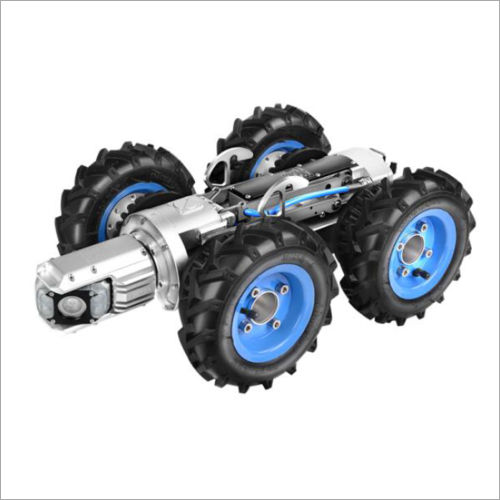
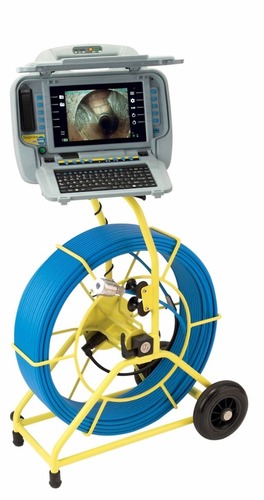
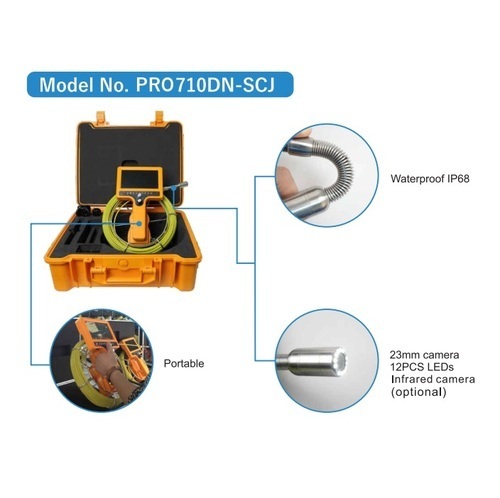
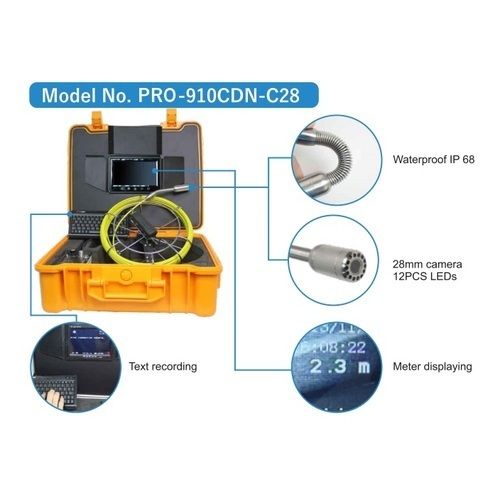
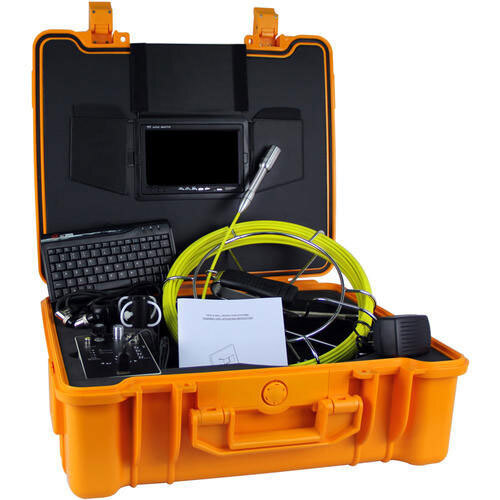
 Call Me Free
Call Me Free